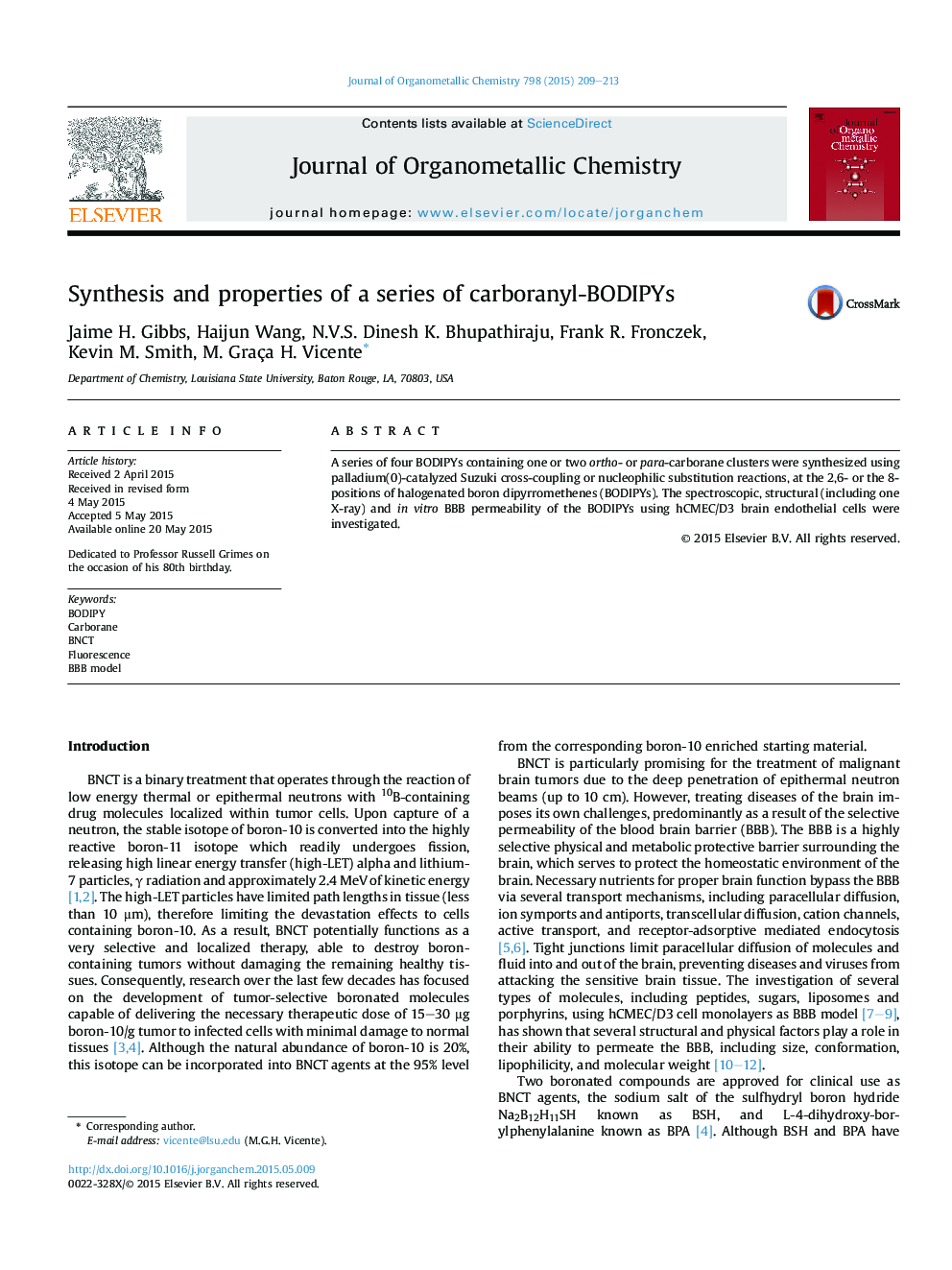| Article ID | Journal | Published Year | Pages | File Type |
|---|---|---|---|---|
| 1323284 | Journal of Organometallic Chemistry | 2015 | 5 Pages |
•BODIPYs functionalized with closo-carboranes were synthesized via Suzuki cross-coupling or nucleophilic substitution reactions.•The structural features of the BODIPYs were studied by NMR, MS, and X-ray crystallography.•The in vitro BBB permeability of the BODIPYs was investigated using hCMEC/D3 cells as BBB model.•The closo-carborane cages do not quench the fluorescence of BODIPY dyes.
A series of four BODIPYs containing one or two ortho- or para-carborane clusters were synthesized using palladium(0)-catalyzed Suzuki cross-coupling or nucleophilic substitution reactions, at the 2,6- or the 8-positions of halogenated boron dipyrromethenes (BODIPYs). The spectroscopic, structural (including one X-ray) and in vitro BBB permeability of the BODIPYs using hCMEC/D3 brain endothelial cells were investigated.
Graphical abstractTwo synthetic routes to four BODIPYs containing one or two ortho- or para-carborane clusters, are described. The most promising compound for application as boron delivery agent for BNCT is 8-(ortho-carboranyl-1-thio)-1,3,5,7-tetramethyl-BODIPY, due to its higher permeability across hCMEC/D3 cell monolayers.Figure optionsDownload full-size imageDownload as PowerPoint slide
